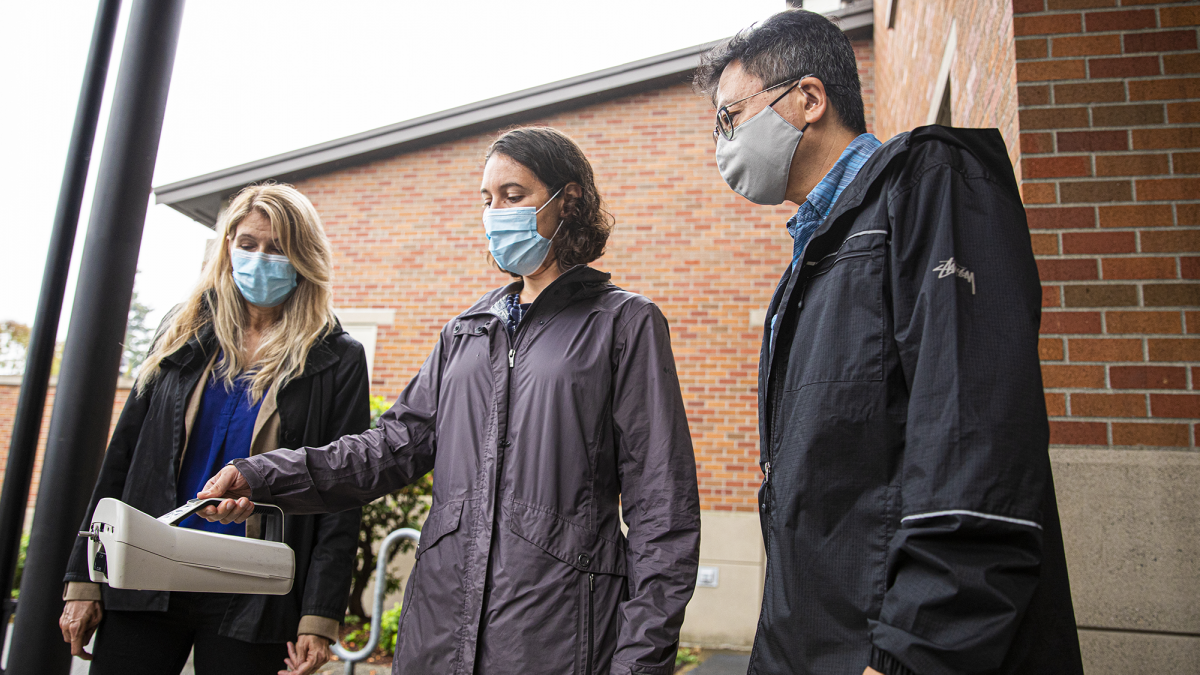What started as a University of Washington-led project to measure air pollution near Sea-Tac International Airport has resulted in schools in the area installing portable air filters to improve classroom air quality.
UW researchers first discovered a way to distinguish aircraft pollution from roadway pollution in communities that sit under airport flight paths and then map the air quality impacts of the ultrafine particles associated with planes.
They learned that this mix of ultrafine particle pollution, black carbon and other pollutants from both sources was infiltrating local school buildings.
State lawmakers and community advisers to the study wondered if the UW team could find a way to remove the pollution and protect children, teachers and workers in those buildings.
They were concerned because of a growing body of evidence that suggests this pollution is bad for everyone’s health, particularly children and older adults. Poor indoor air quality may also lead to poor student performance and increased absenteeism from school.
A 70% reduction in ultrafine particles in the classroom
“It wasn’t clear from the outset of the project that we could measure significant infiltration indoors,” said Elena Austin, assistant professor in the UW Department of Environmental & Occupational Health Sciences (DEOHS).
“Not all particles act the same. They don’t behave the same in the brain or in the body, and they also don’t penetrate into buildings through the same routes. However, we did measure significant infiltration.”
In phase one of their Healthy Air, Healthy Schools Project, funded primarily by the Washington State Legislature, the UW team discovered that portable air cleaners with HEPA, or High Efficiency Particulate Air, filters in classrooms reduced pollution levels dramatically.
In a recent report to the Washington State Legislature, the researchers wrote that the filters reduced all ultrafine particles by 83%, aircraft-specific particles by 67% and heavy-duty truck particles by 73% over a two-day test period.
Overall, using portable HEPA filter units could reduce classroom concentrations of ultrafine particles by approximately 70%, depending on the age of the school building and other characteristics, according to the study’s models.
“We have to consider outdoor air pollution when we’re thinking about healthy schools, and the answer to addressing outdoor air pollution is twofold,” Austin said.
“The first is reducing the emissions from their sources, but that is not always possible. So … effective interventions are critical. This project demonstrates that HEPA filters can be a viable intervention,” Austin said.
HEPA filters now in most classrooms
The team’s data was so stark that community leaders encouraged school districts to use these filters in their buildings.
In response, Austin said, the two school districts that partnered with DEOHS on the study—Federal Way Public Schools and Highline Public Schools—purchased air filters for most classrooms to improve indoor air quality and to combat the spread of the virus that causes COVID-19.
“When many of the school districts we’re working with saw the results and heard concerns from parents, teachers and unions about air quality, they went ahead and used federal funds to purchase HEPA filters for their classrooms,” Austin said.
Next steps: Expanding the study
For phase two, the researchers are working on a new two-year study in 20 schools across Washington where they will deploy more air filters and learn more about student health and academic performance in classrooms with cleaner air.
They also hope to help school districts balance the benefits of these filters with their energy use and explore other methods for reducing air pollution, such as upgrading buildings.
Study co-authors also include Nancy Carmona, Jeffry H. Shirai, B.J. Cummings, Lisa Hayward and Edmund Seto from DEOHS; Timothy Gould from the UW Department of Civil & Environmental Engineering; and Timothy Larson, a professor in both UW departments.
In addition to funding from the Legislature, regional partners for the study include the cities of SeaTac, Burien, Federal Way, Normandy Park and Des Moines; Federal Way Public Schools; Highline Public Schools; and the University of Washington Ultrafine Advisory Group.




